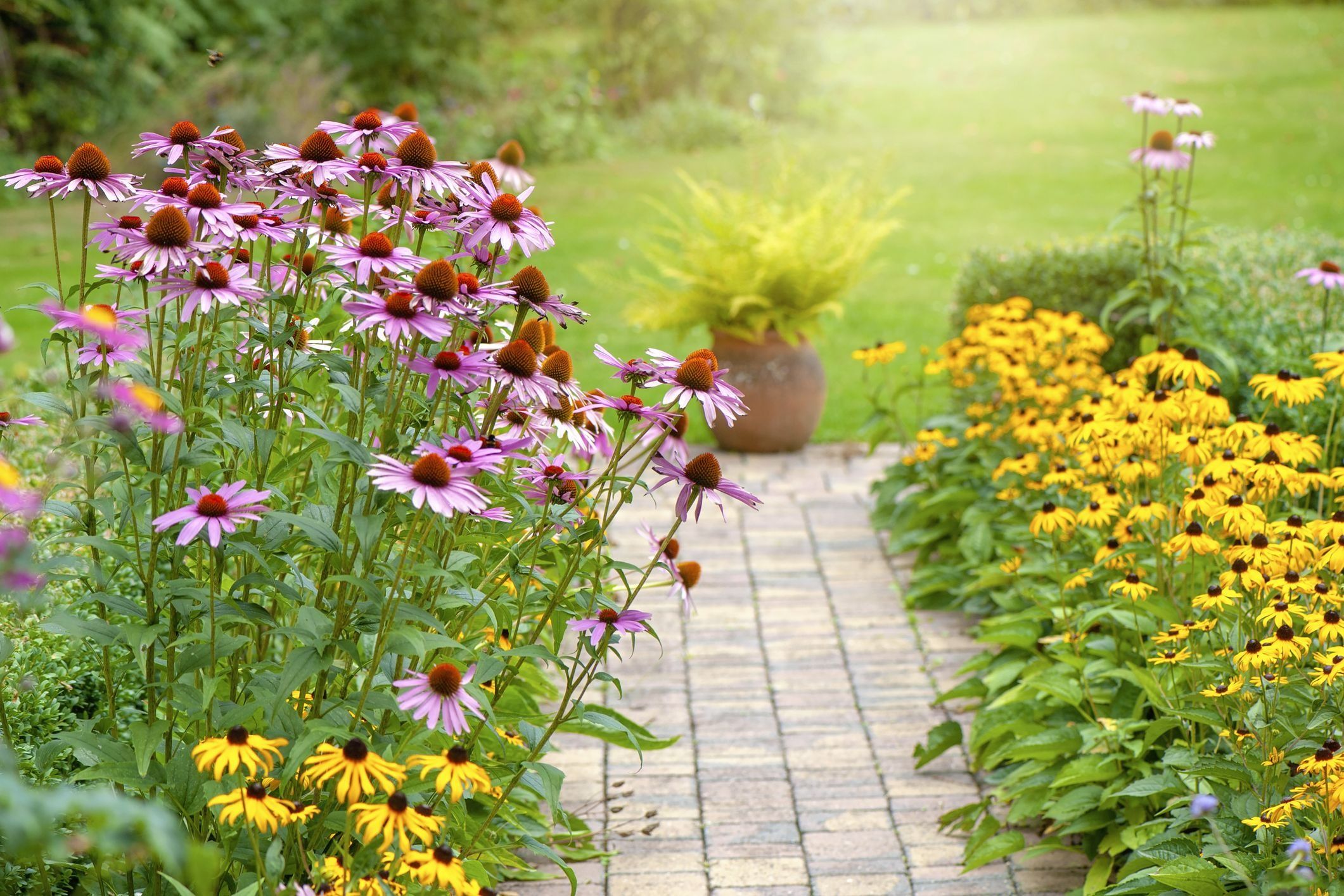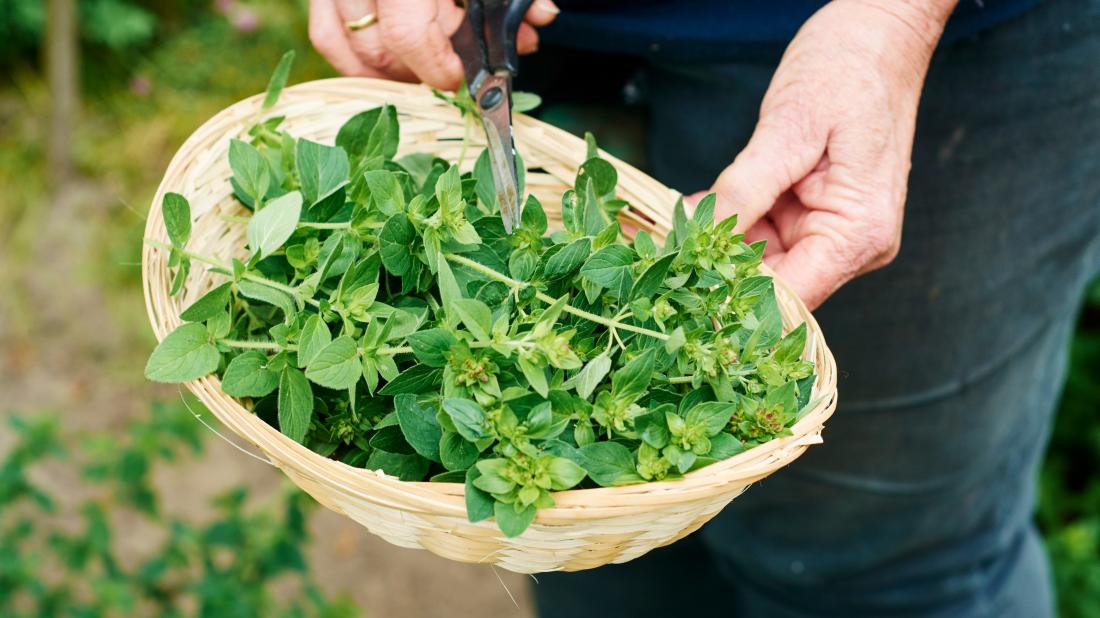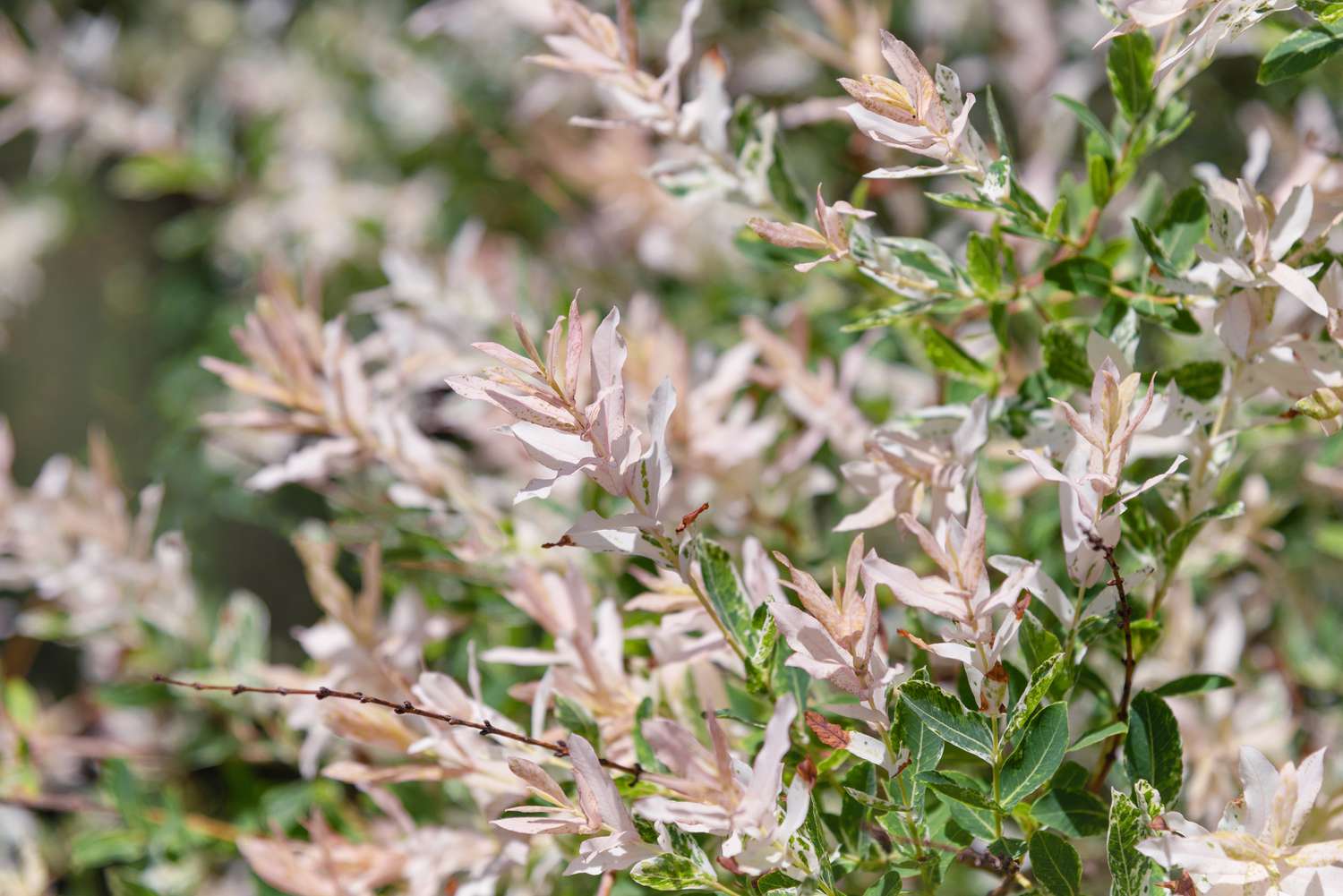Care Tips and Growing Advice for Astilbe ‘False Goats Beard’
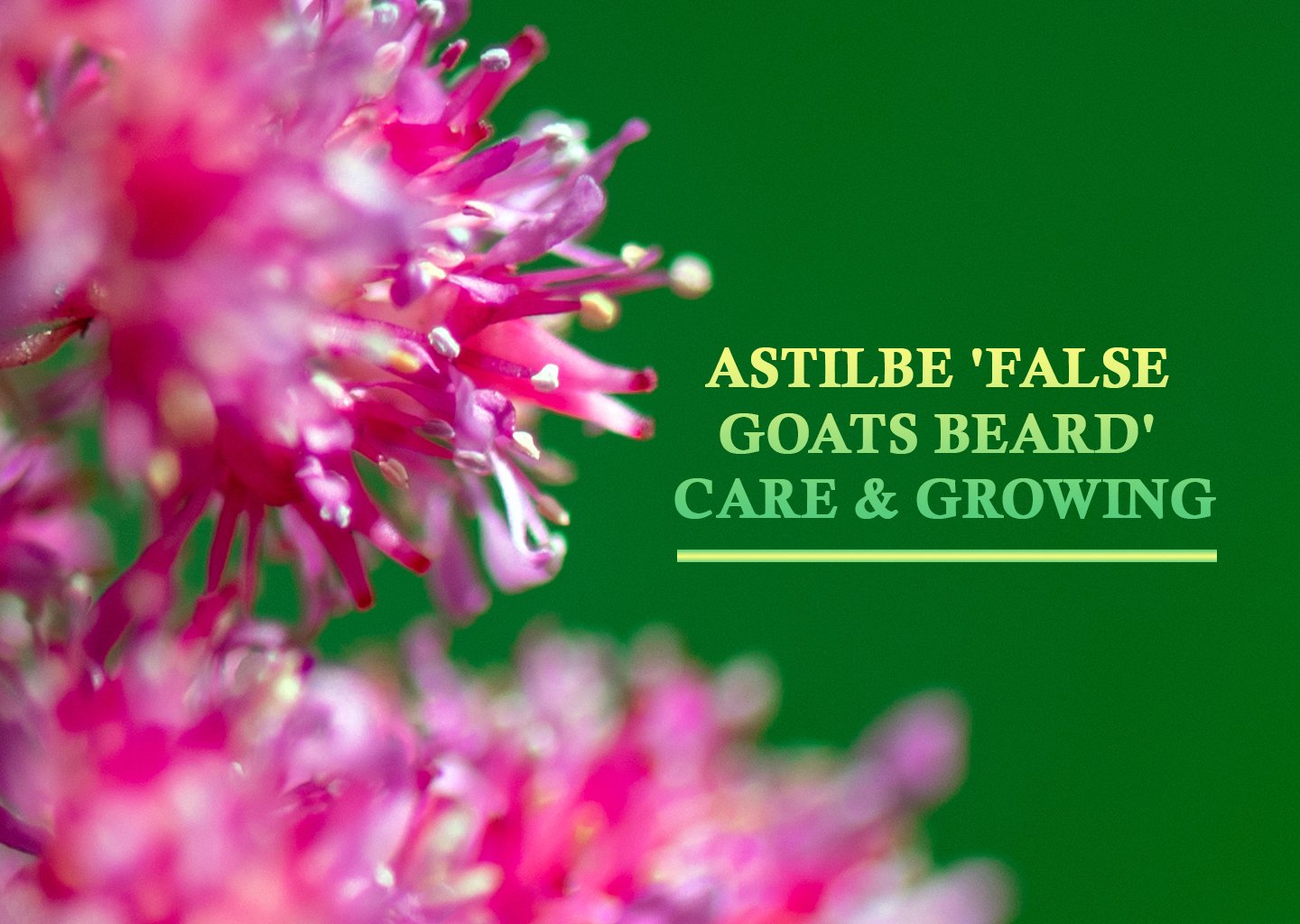
Table of Contents
This perennial plant can be grown in a shady spot and is a great choice for gardeners in the UK looking for a low-maintenance perennial plant that can add great colour to your garden. Also called a false goat’s beard, it grows well in shady areas and blooms during summer.
Our goal in this article is to provide you with all the information you need about how to care for astilbe plants in the UK. In order to ensure your astilbes bloom beautifully year after year, you will be provided with all the information you need, from where to plant them to how much sunlight they require to watering and feeding.
In any case, you can learn our top tips for growing astilbes in the UK, regardless of whether you are an experienced gardener or just starting out.
What Is False Goat’s Beard?
This plant blooms in various shades of pink, red, white, and purple and is sometimes called a false goat’s beard because it appears in a variety of shades. Astilbe can grow up to 5 feet tall and is an ideal choice for gardens with shady areas. The plant does not require special care and is very easy to cultivate. This plant belongs to the Saxifragaceae family and is native to Asia and North America. It does not require any special care and is easy to maintain.
Throughout this article, you will learn everything you need to know about growing and caring for astilbe. This includes where and how to plant it, how to water and fertilize it, and how to ensure it blooms every year.
Features of Astilbe
| Family | Saxifragaceae |
| Native to | Asia and North America |
| Common names | False spirea, false goat’s beard |
| Plant type | Perennial |
| Bloom time | Summer |
| Flower colours | Pink, purple, red, and white |
| Foliage colour | Dark green and glossy |
| Preferred location | Cool, moist, and shaded locations |
| Sun exposure | 4-6 hours of the morning sun, shade or partial shade |
| Soil type | Moist, well-draining soil rich in organic matter |
| Water requirements | Regular watering, not tolerant of drought |
| Fertilization | Regular feeding with a slow-release fertilizer in spring/summer |
| Mulching | Benefits from organic matter mulched around the base of the plant |
| Pruning | Remove dead/damaged foliage and spent flower stems |
| Longevity | Perennials can provide beautiful blooms year after year |
How to Care for a False Goat’s Beard
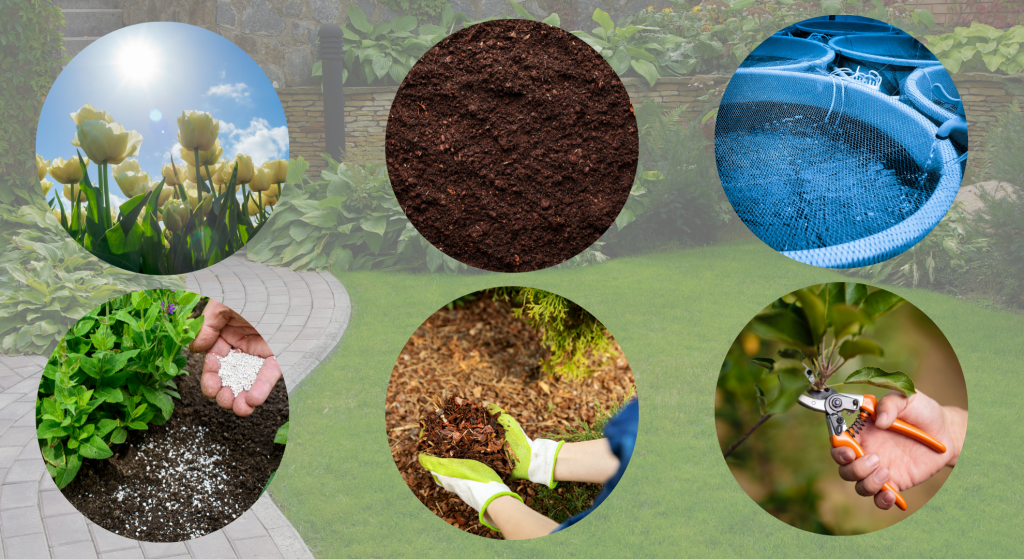
1. Proper Location
Astilbe plants require at least 4-6 hours of morning sun per day. They can grow in the garden’s shade or partially shaded areas. Choose a location that is protected from strong winds and receives plenty of morning sunlight when planting astilbe. Overexposure to direct sunlight or heat can cause the plant to wilt and dry out quickly.
2. Balanced Soil
Astilbe thrives in moist, well-draining soil that is rich in organic matter. Prepare the soil before planting by adding compost or other organic matter to help retain moisture. The soil should be consistently moist but not waterlogged. Because astilbe plants dislike being dry, it is critical to keep the soil moist, especially during dry spells.
3. Adequate Watering
Watering Astilbe plants on a regular basis is necessary to keep the soil moist. Deeply water the plants at least once a week or more frequently in hot, dry weather. To avoid fungal diseases, water the soil rather than the leaves. Water first thing in the morning to allow excess moisture to evaporate before bedtime.
4. Application of Fertilizer
In the spring and summer, astilbe plants benefit from a slow-release fertilizer. Use a balanced fertilizer that contains equal parts nitrogen, phosphorus, and potassium. Avoid fertilizing in the autumn because it can stimulate new growth that is susceptible to frost damage.
5. Desired Amount of Mulch
A layer of organic mulch around the base of the plant can aid in moisture retention and temperature regulation. Mulch keeps the soil cool and moist during hot weather while also preventing weed growth. Apply a layer of organic mulch, such as compost, shredded leaves, or bark chips, 2-3 inches thick.
6. Pruning Technique
Remove any dead or damaged foliage in the autumn or early spring. When spent flower stems have finished blooming, cut them back. Pruning promotes new growth and keeps the plant healthy. To avoid causing damage to the plant, use clean, sharp tools.
What Is the Best Place to Grow Astilbe?
- Best grown in a location that gets 4-6 hours of morning sun per day, in shade or partial shade
- Thrives in cool, moist locations and should be protected from the hot afternoon sun
- Prefer moist, well-draining soil rich in organic matter and not tolerant of drought.
- Regular fertilization with a slow-release fertilizer in spring and summer
- Mulch around the plant to retain moisture and regulate soil temperature
- Prune dead or damaged foliage in autumn or early spring
- Cut back spent flower stems to promote new growth and prevent self-seeding.
Top Six Varieties of Astilbe
1. Bridal Veil
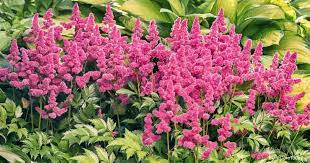
They are cultivars of A. x arendsii and are generally hardy in Zones 5-8, though some, such as ‘Fanal’ (which we will discuss later), are adaptable to colder climates. The flowers of this species bloom in the early or midpart of the growing season. ‘Bridal Veil’ produces soft vertical plumes of creamy white flowers. The foliage is a glossy green, growing to a height of about 30 inches. It spreads to a width of 18 inches.
2. Chocolate Shogun
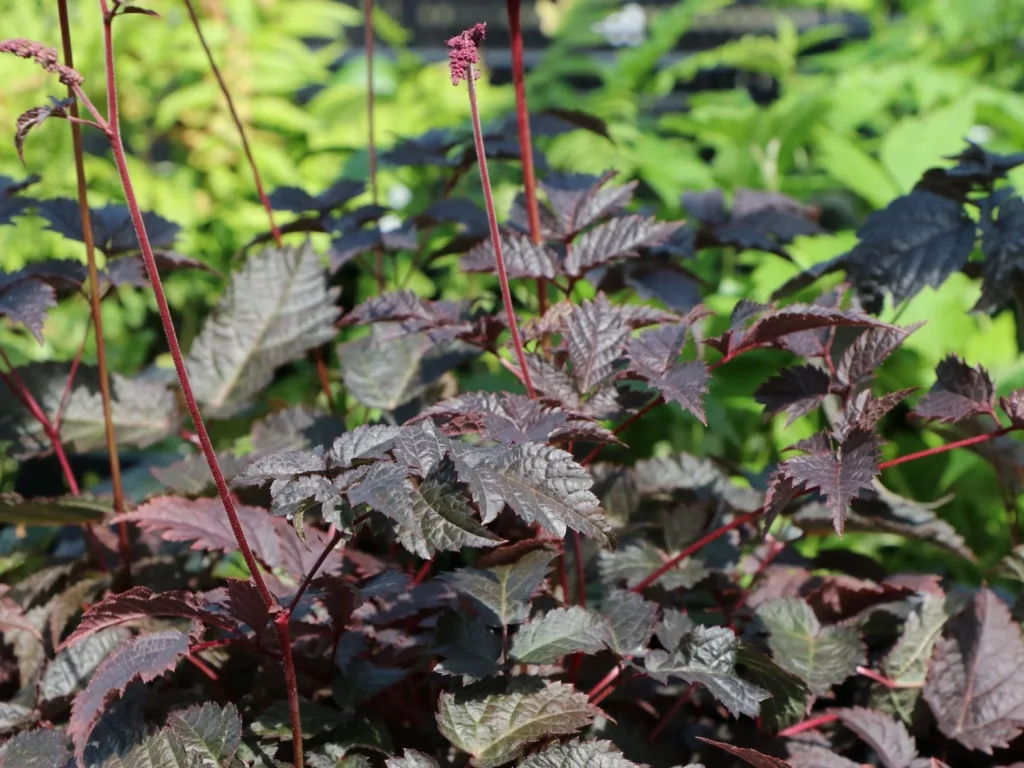
This cultivar is hardy in Zones 5–9 and will make you think of dessert! The foliage of A. thunbergii ‘Chocolate Shogun’ is intensely chocolate-coloured, and the flower spikes are lacey pink in colour. This is a beautiful flower for use in dried or cut arrangements for its elegant appearance. As long as enough moisture and mulch are provided, this plant can grow in partial shade as well as in full sun in warmer climates.
3. Fanal
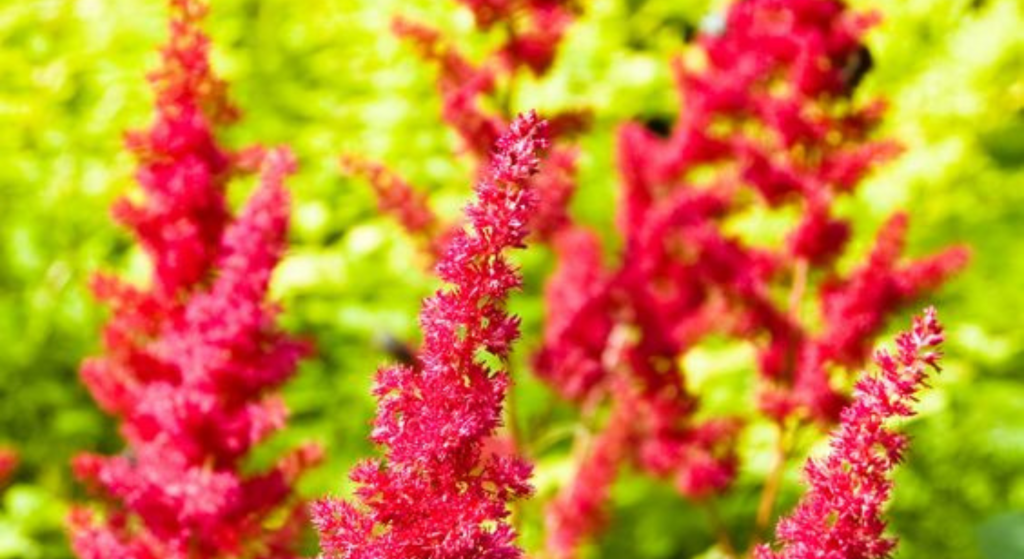
“Fanal” is a special form of geranium that is prized for its use in cutting flower bouquets. It doesn’t need to be cut back in the winter because the foliage adds a lot of interest to the garden even after the flowers have faded. It can be pruned in the early spring if you would prefer to do so, as it is hardy in zones 3-8.
4. Hennie Graafland
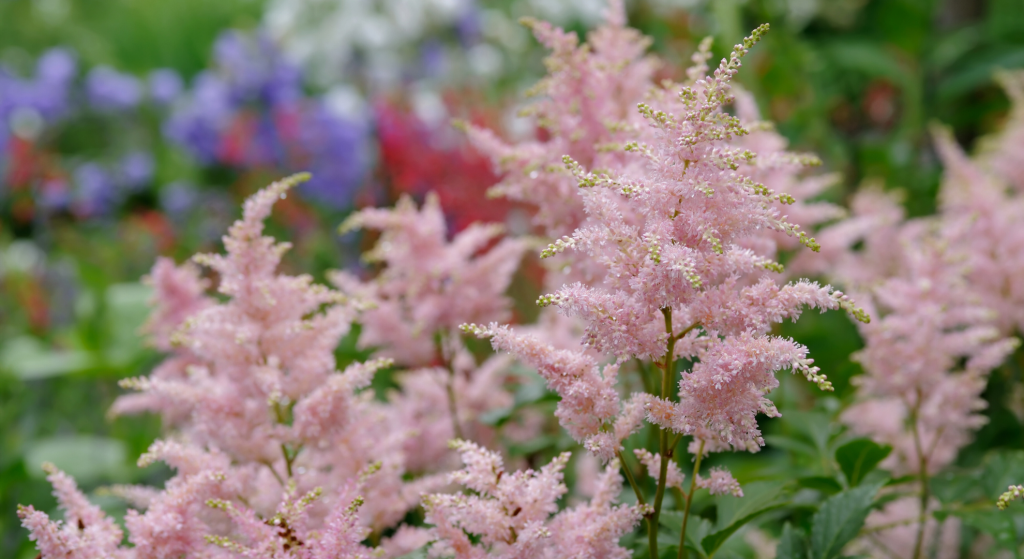
It is the perfect variety for containers since it only grows 10-18 inches tall and 24 inches wide. Astilbe ‘Hennie Graafland’ is a compact variety that is only 10-18 inches tall and 24 inches wide. As a perennial, it prefers to grow in moist soil, especially if it is in a container. It produces delicate pale pink flowers that last for several weeks and can brighten up a shady garden. It grows best in zones 4-9 and can last for several weeks.
5. Maggie Daley
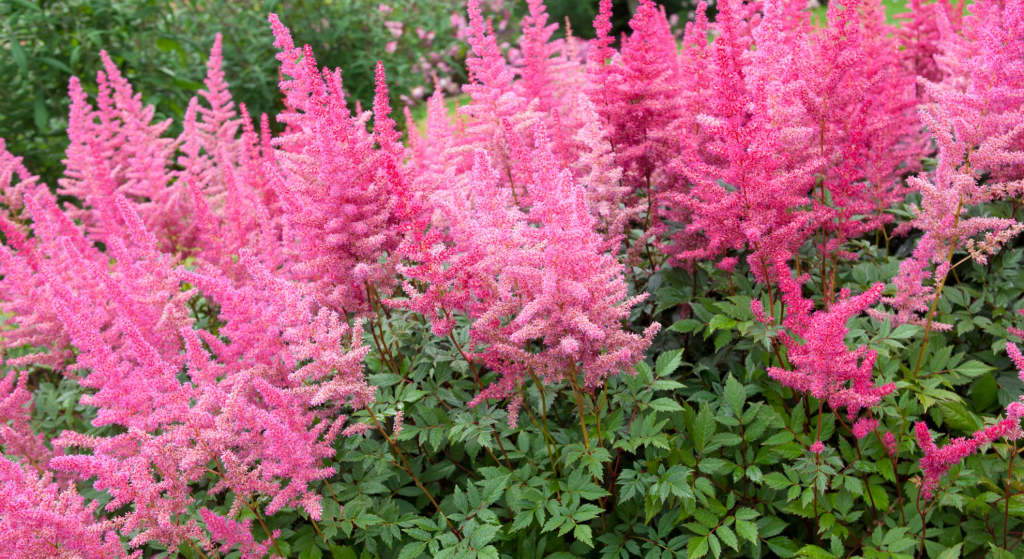
It has bright purple clusters of flowers on bright green foliage and is a late-flowering variety of Astilbe chinensis ‘Maggie Daley’. Growing up to 28 inches tall and 20 inches wide, it is hardy in Zones 4-9. It attracts butterflies and other pollinators and grows best in partial or full shade.
6. Visions
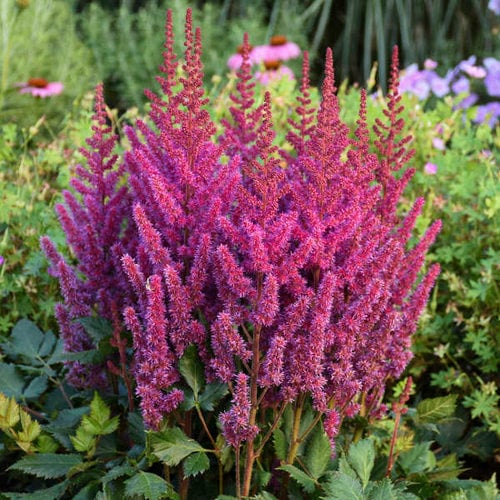
Astilbe chinensis ‘Visions’ is a feathery variety that produces raspberry-pink blooms on bronze-green glossy foliage. It grows up to 10 inches tall and wide and is more tolerant of dry soil than some other astilbe varieties, but it still needs to be kept moist. It produces fragrant flowers and blooms in midsummer in Zones 3-8.
Summing Up
All in all, growing and caring for the Astilbe ‘False Goat’s Beard’ can be an enjoyable experience that adds beauty and charm to any garden. It doesn’t matter whether you are a seasoned gardener or just starting out. This plant will be an excellent addition to your collection. Remember to give it plenty of water, sunlight, fertilizer, and space to spread and grow.
This article will lead you to a stunning display of delicate blooms year after year. It is important to follow these guidelines and pay attention to the needs of your astilbe. This will ensure that a stunning display of delicate blooms emerges year after year. You don’t want to miss out on the magic of your own yard if you try it.
It would be a pleasure to hear from you in the comment section.

